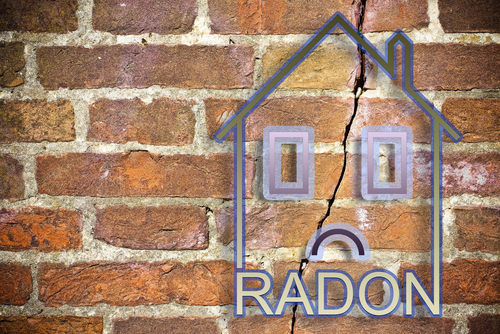How Does Radon Gas Enter a Home?
April 9, 2024 2:38 pm Leave your thoughtsRadon gas is a colorless, odorless, and tasteless radioactive gas that is formed naturally from the decay of uranium in the soil. It is a known carcinogen and is the second leading cause of lung cancer in the United States after smoking. Radon gas can enter homes through various pathways, and understanding how it enters is crucial in taking steps to mitigate its presence.
1. Soil and rock beneath the home
One common way that radon gas enters a home is through the soil and rock beneath the foundation. As uranium in the soil breaks down, it releases radon gas, which can seep through the porous soil and enter the home through cracks in the foundation. Homes built on soil with high levels of uranium are more likely to have elevated levels of radon gas. Additionally, homes with basements or crawl spaces are at higher risk of radon infiltration, as these areas provide a direct pathway for the gas to enter the home.
2. Gaps and cracks in the foundation
Another common entry point for radon gas is through gaps and cracks in the foundation of the home. Over time, as the home settles, small openings can form in the foundation, providing an easy pathway for radon gas to enter. These gaps and cracks can be found in the foundation walls, floors, and around pipes or utility lines that penetrate through the foundation. Sealing these openings with caulk or epoxy can help prevent radon gas from entering the home.
3. Gaps around pipes and conduits
Radon gas can also enter a home through gaps around pipes and conduits that run through the foundation or walls. These openings can occur where plumbing pipes, electrical conduits, or gas lines enter the home, providing a direct route for radon gas to infiltrate. Sealing these gaps with caulk or foam can help to prevent radon gas from entering the home.
4. Well water
In some cases, radon gas can enter a home through well water. Radon gas can dissolve in groundwater and can be released into the air when the water is used for washing, bathing, or other household activities. Homes that rely on well water for their water supply may be at risk for radon gas exposure, especially if the well water has high levels of radon. Testing the well water for radon and installing a water treatment system if needed can help reduce radon levels in the home.
5. Building materials
Certain building materials used in the construction of a home can also contribute to radon gas levels indoors. For example, concrete blocks and other porous materials can absorb radon gas from the soil and release it into the home. Additionally, some types of insulation and sealants can create a barrier that traps radon gas inside the home. Choosing radon-resistant building materials and sealing or mitigating any potential entry points can help reduce radon levels in the home.
Summary
Radon gas can enter a home through various pathways, including the soil and rock beneath the home, gaps and cracks in the foundation, pipes and conduits, well water, and building materials. Understanding how radon gas enters a home is the first step in addressing the issue and implementing measures to reduce radon levels. Testing for radon gas is essential to determine if levels are elevated in the home, and if so, taking steps to mitigate its presence can help protect the health and safety of occupants. By sealing openings, installing radon mitigation systems, and using radon-resistant building materials, homeowners can reduce their risk of radon exposure and create a healthier indoor environment.
Need Biohazard Consulting in Basalt, CO?
Welcome to HealthSafe Inspections, Inc.! We are a locally owned and operated business that provides quality services to customers in Aspen and the surrounding cities. With over 35 years of experience in the industry, we strive to maintain the friendly and trustworthy reputation that we have built. HealthSafe Inspections, Inc. is an indoor environmental consulting firm. Our services include on-site investigation and sampling, report writing, recommendations, and post-remediation verification. After an initial consultation, we are able to determine what is needed. We also consult and test for several indoor contaminants, such as allergens, asbestos, bacteria, mold and fungus, radon gas, and more. Contact us today to learn more about what we can do for you!
Categorised in: Radon
This post was written by admin

